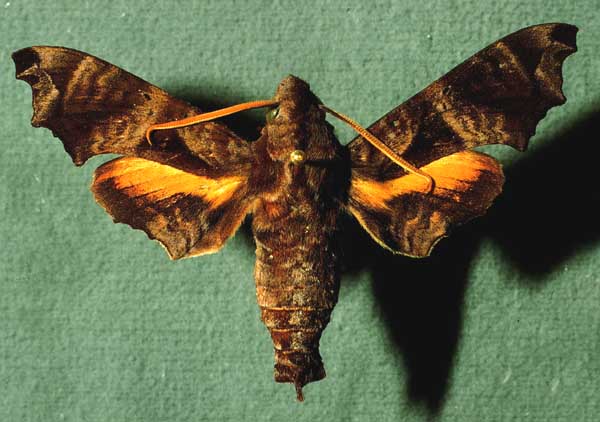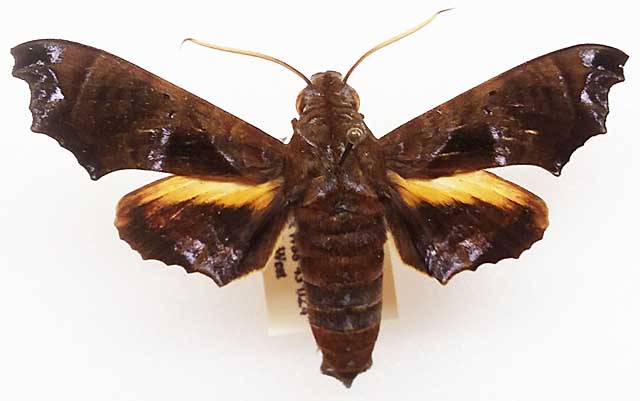Nyceryx eximia
|
|
Updated as per The Known Sphingidae of Costa Rica, November 2007
Updated as per personal communication with Jose Monzon (Guatemala); May 2009
Updated as per personal communication with Anna and Frank West (Morales, Izabal, Guatemala, August, 2006); April 13, 2022
|
Nyceryx eximia
Rothschild & Jordan, 1916

Nyceryx
eximia, male, Costa Rica, courtesy of Dan Janzen.
This site has been created by Bill Oehlke
Comments, suggestions and/or additional information are welcomed by Bill.
TAXONOMY:
Family: Sphingidae, Latreille, 1802
Subfamily: Macroglossinae, Harris, 1839
Tribe: Dilophonotini, Burmeister, 1878
Genus: Nyceryx Boisduval, [1875] ...........
Species: eximia Rothschild & Jordan, 1916
|
DISTRIBUTION:
Nyceryx eximia (wingspan: approximately 65mm)
flies in Panama, the specimen type locality, and in
Costa Rica; and
Guatemala (JM); Izabala: Morales (A&FW); and as far north as
Mexico: Veracruz; Chiapas. It probably flies throughout Central America.

Nyceryx eximia, 65mm near Morales, Izabal, Guatemala,
August, 2006, courtesy of Anna & Frank West
As far as I know Nyceryx mulleri is a synonym of Nyceryx eximia.
FLIGHT TIMES:
Moths are probably on the wing in just about every month.
ECLOSION:
Adults eclose, usually within three weeks.
SCENTING AND MATING:
Females call in the males with a
pheromone released from a gland at the tip of the abdomen.
EGGS, LARVAE, PUPAE:
Larvae feed on
Return to Sphingidae Index
Return to Dilophonotini Tribe
Goto South American Index
Use your browser "Back" button to return to the previous page.
This page is brought to you by Bill Oehlke and the
WLSS. Pages are on space rented from Bizland. If you would like
to become a "Patron of the Sphingidae Site", contact Bill.
Please send sightings/images to Bill. I will do my best to respond to requests for identification help.
Enjoy one of nature's wonderments: Live
Saturniidae (Giant Silkmoth) cocoons.
 | 
Show appreciation for this site by clicking on flashing butterfly to the left.
The link will take you to a page with links to many insect sites. |



